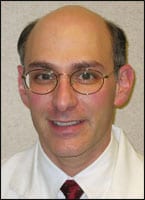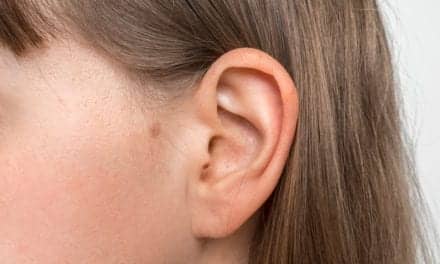Dermatologists must take the lead in talking about acne issues with kids, adults
 |
| Alan B. Fleischer, Jr, MD |
At this year’s meeting of the American Academy of Dermatology (AAD), Alan B. Fleischer, Jr, MD, of the Department of Dermatology, Wake Forest University School of Medicine in North Carolina, presented a national survey demonstrating that acne can negatively impact a number of elements in a person’s life, whether it is professional, academic, physical, or social. Furthermore, the survey suggested that the lack of communication between physician and patient may play a role in preventing appropriate treatment plans.
“Teens are the majority of the market, but still there are a huge proportion of people older, like me at 47, who still have acne,” says Fleischer, who helped create the survey. “This was a study designed to look at the impact of acne on a variety of psychosocial issues, like their mood and their fear of negative reaction, their beliefs and myths, and their compliance.”
STUDY HIGHLIGHTS
Conducted by polling firm Harris Interactive on behalf of Retin-A Micro Pump, the survey, titled “Skin Matters,” was administered online between December 7, 2007, and December 19, 2007, among 1,237 American teens ages 13 to 19 with acne, 514 adults ages 20 to 40 with acne, 628 parents ages 30 and above with children ages 13 to 19 who have ever experienced acne, and 263 US-based dermatologists who treat patients with acne.
Most commonly, acne occurs in people between the ages of 12 and 20, and results show that it impacts teenage girls more negatively than their male counterparts, with greater effects on self-confidence, mood, physical health, and relationship with family.
Nevertheless, the survey emphasized that acne is not just a teen issue. The report cited another recent survey, which revealed that 45.8% of dermatologists’ acne patients are adults. Furthermore, 66% of dermatologists say they now see more adult acne patients than they did a year ago. Sixty-seven percent of adults with acne thought they would no longer have acne by their 20s; however, 30% of them state their acne has either stayed the same or even become worse. Nearly 40% of adults with acne agreed that it is more stressful having acne as an adult than as a teenager, and 50% of adults find it to be unappealing, even more so than having facial wrinkles or gray hair.
ACNE IN THE CORPORATE WORLD
Fleischer was not surprised by the findings, especially the large percentage of adults who are stressed out about their blemishes. “Professional people don’t have pimples on their face,” Fleischer notes wryly, touching on the commonly held unrealistic expectation.
Although the survey found that dermatologists reported seeing an increase in adult patients, Fleischer believes that acne in older individuals is not necessarily more prevalent. Rather, the most common skin disease, which affects 40 to 50 million Americans today, has always plagued adults.
“My suspicion is that it’s always been there, and it’s always been undertreated,” he says.
According to the AAD, nearly every case of acne is treatable. Ninety-seven percent of dermatologists who participated in the survey corroborated this sentiment, yet many say patients are not committed to their treatment plans. Only 54% of adults said they strictly followed their prescribed regimens, and half of teens who use acne medications exactly adhered to physicians’ orders. Most notably, only 2% of dermatologists believed that patients followed treatments exactly as prescribed.
|
See also “Blasting Away at Acne” by Neil Sadick, MD, FAAD, FAACS, FACP, FACPh, in the November 2008 issue of PSP. |
 |
For the past 4 years, Fleischer and colleague Steven Feldman, MD, have administered a series of studies on compliance. Specifically, their center inserts electronic microchip devices, called “stealth monitors,” on the caps of bottles of acne medication prescribed to patients. The device can tell how often the caps are removed, therefore monitoring how strictly people adhere to their regimens.
“Once a day is the absolute maximum that patients put something on their face,” Fleischer said. “As a result of these studies, I’ve changed all of my treatments for dermatologic conditions.”
According to Fleischer, one of the most effective tools in improving compliance is patient-physician communication, and part of the problem may lie at the feet of the dermatologist and not just the patient.
Fleischer urged fellow physicians to consider prescribing simple regimens, rather than complex ones that require patients to apply medication multiple times during the day. “We need to bring our expectations into line with reality in how patients will actually be treated,” Fleischer adds. “I tell people, ‘Truly, I expect 2 minutes of your time. That’s all. If you give me 2 minutes, I will give you a clear face.’ “




